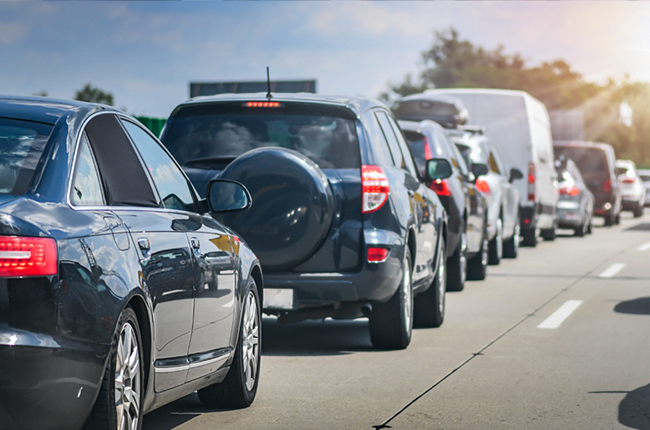
When it comes to fuel efficiency figures in the Philippines you will typically see words such as averages, kilometers per liter, and in some rare cases miles per gallon. Some people swear by fuel efficiency as the main determining factor when buying a car, and there are even some that will justify abysmal fuel figures for the sake of performance and vehicle dynamics. To each his/her own, we guess.
With that said, we’ll talk about how fuel consumption numbers are generated and we’ll also be looking at some terms and give basic formulas on how you can arrive at a more accurate fuel consumption reading for your vehicle depending on your driving style. Warning, there is some math involved here.
Manual Computation

Cars today are so technologically advanced that most come with computers that do the fuel efficiency computations for you. They display all the relevant information you need to know about how much fuel your car is drinking. However, if you want to do it yourself, there is a manual way of computing your fuel consumption which some call the full tank method. If you want to try it out yourself simply follow these steps:
-
Fill your tank to the top
-
Zero the trip counter
-
When you next fill up, note the kilometers driven
-
Fill the tank again and note the number of liters filled into the tank
-
Divide the number of kilometers driven by the amount of fuel added in liters (kilometers per liter)
For example, fill up the tank to full, reset the trip meter, drive around for a day or two, and top up the tank again. The trip meter reads 140 kilometers at the gas station, and it takes 20 liters to fill up the tank again. So divide 140 by 20, which equals 7. The last drive between visits to gas stations equals 7 km/L of fuel consumption.
Liters per 100 kilometers

In some vehicles, they will note their fuel efficiency readings by liters per 100 kilometers. Or L/100km. To convert this to kilometers per liter, simply divide 100 by the number of liters next to the “L." So, if the reading says 6L/100km, that’s 100 divided by 6, which equals 16.6 kilometers per liter (km/L). Easy, right?
MPG to km/L (and vice versa)

This is a rare sight to find on Philippine market vehicles especially as dealerships even for American vehicles already place the fuel economy figures to kilometers per liter instead of miles per gallon. That said, if you do stumble upon a vehicle with miles per gallon (mpg) and want to convert it to kilometers per liter (km/L), simply multiply the mpg value with 0.4251.
25 miles per gallon multiplied by 0.4251 is equal to 10.63 kilometers per liter. \
Now if you want to convert km/L to mpg, you multiply the kilometer per liter value to 2.353.
10 kilometers per liter multiplied by 2.353 is equal to 23.53 miles per gallon.
General guidelines

Something to remember is that the fuel consumption figures that are provided by manufacturers are simply a guideline for comparison. They are typically done in the laboratory and under controlled conditions to give out the best fuel efficiency numbers possible. What you want to look out for is the fuel efficiency figures of reviewers as they have more realistic conditions, nevertheless, still, take it with a grain of salt as their conditions may not be the same as yours when you drive the car. Make sure to take note of the speeds they travel and the wording when they describe fuel economy. If they mean average speed, this indicates that there were times that the car was traveling slower or faster than the posted speed.

Another thing to take note of is that many cars employ a start-stop system and hybrid technologies to help alleviate wasted fuel in a variety of driving situations. Transmission with wider bands and more gears to choose from are also becoming the norm, keeping our vehicles in the most efficient and optimum rev range. These all help to reduce fuel consumption and save a little bit more gas for those extra kilometers.
Latest Features
-
An all-electric future: The Porsche Macan Electric / Featured Article
Porsche’s Macan goes all-electric; it’s a new beast with an electrified heart, yet unmistakably Porsche in performance and spirit.
-
Which Kia should I buy? / Featured Article
We’re here to help you decide which Kia vehicle is best for you, whether it’s a sedan, crossover, or minivan.
-
Why Lynk & Co is a good option for luxury car buyers / Featured Article
Lynk & Co offers premium value for those exploring the luxury market.
Popular Articles
-
Electric Vehicles in the Philippines for under P1 million
Jerome Tresvalles · Aug 19, 2025
-
Top 3 Cars For Every Lifestyle—What Cars Are Right For You? | Behind a Desk
Caco Tirona · Apr 24, 2024
-
5 Tips to Maximize Fuel Efficiency
Jerome Tresvalles · Sep 09, 2024
-
Five driving habits that are draining your fuel tank
Jerome Tresvalles · Jun 24, 2025
-
Can engine braking harm your engine?
Jerome Tresvalles · Sep 11, 2025
-
Do electric cars even need maintenance?
Jerome Tresvalles · Oct 23, 2024
-
Best vehicles for an active outdoor lifestyle
Shaynah Miranda · Jul 25, 2024
-
How to drive different types of vehicle transmissions
May 23, 2024
-
5 easy ways to keep your car interior clean
Allysa Mae Zulueta · Nov 15, 2021
-
How to survive Metro Manila traffic
Earl Lee · Aug 16, 2022



